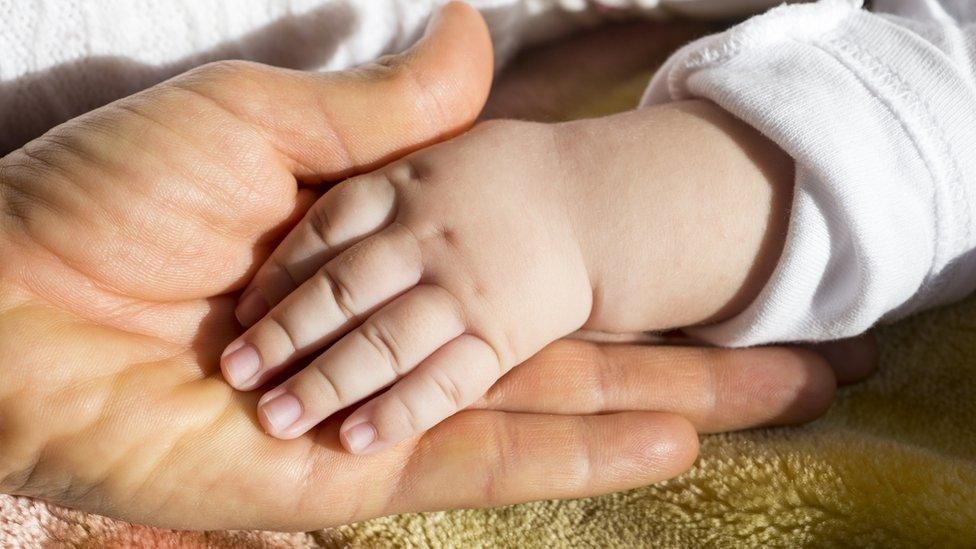Infant death rate 'lowest ever' recorded
- Published

More babies are surviving to their first birthday
The number of babies dying before their first birthday in England and Wales is at its lowest ever rate, new figures have revealed.
The infant mortality rate was 3.6 deaths for every 1,000 live births, according to the Office for National Statistics (ONS).
Some areas saw rises, including the East of England, north east England, West Midlands and parts of South Wales.
The ONS said improved healthcare was partly behind the fall.
There were 2,517 infant deaths - deaths of children under one year old - in England and Wales in 2014, compared with 2,686 in 2013 and 6,037 in 1984.
Respiratory and cardiovascular problems were the most common causes of infant deaths, responsible for 41% of the total.
The ONS figures showed that between 1984 and 2014 the mortality rate for children aged 1 to 14 years dropped by 64%.
There were 10 deaths per 100,000 children in 2014, compared with 28 per 100,000 three decades earlier.
Cancer and diseases of the nervous system are the most common cause of death for children aged 16 and under, the ONS reported.
Stillbirths
The rate of stillbirths increased in Wales, rising from 4.5 for every 1,000 births to 5.2 between 2013 and 2014.
It also increased in England in the South West, East Midlands, West Midlands and South East.
The England average was unchanged, at 4.6 stillbirths per 1,000 babies. The North East saw the biggest fall in England from 5 stillbirths per 1,000 babies to 4.3.
In a report on the figures the ONS said: "Infant mortality rates have decreased in England and Wales since the early 1900s. More recently, over the past 30 years, the rate of decline has varied; the decrease between 1984 and 1994 was more than double the decrease recorded in each of the latter two decades.
"Since 1984, when the rate was 9.5 deaths per 1,000 live births, there has been a 62% fall in the infant mortality rate in England and Wales.
"General improvements in healthcare and more specific improvements in midwifery and neonatal intensive care can partly explain the overall fall in mortality rates."
A spokeswoman for the Lily Mae Foundation, which supports parents and families following stillbirths and neonatal deaths, said: "The statistics for infant mortality being at their lowest ever in England and Wales are great news and seem to suggest that something is being done correctly.
"Sadly when you then look at the rise in stillbirth figures in specific areas of the country including the West Midlands it highlights that either the improvements are not being made nationally, or that there are other factors that are playing a large role in theses figures.
"My main concern with a significant regional variation is that there are other demographic and socio-economic factors that may contribute to these higher rates in specific areas regionally.
"Whilst improvements are being made these figures highlight that there is still a lot of work to be done to lower the stillbirth rate consistently across all regions of the UK."
The Department of Health said it has made a number of investments to cut the number of stillbirths, neonatal deaths, maternal deaths and neonatal brain injuries.
Health Minister Ben Gummer said: "Although progress has been made, the death of a child is always a tragedy and we know that more needs to be done to address variation.
"We've committed to halve the number of stillbirths and neonatal deaths by 2030 - investing in improved training for staff, new safety equipment and making sure hospitals review and learn from every tragic case."
- Published26 September 2012
